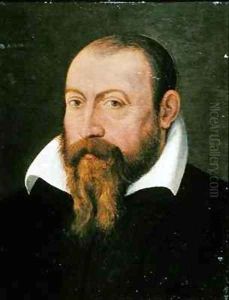Pierre Eskrich Paintings
Pierre Eskrich, also known as Pierre Vase, was a French engraver, illustrator, and publisher active during the 16th century, a period marked by significant developments in the art of printmaking and book illustration. Born around 1530, Eskrich emerged as a prominent figure in the European art scene, contributing notably to the flourishing of engraving and illustration in France. His works are characterized by their intricate detail, innovative compositions, and the integration of Renaissance artistic principles, reflecting the broader cultural and intellectual movements of his time.
Eskrich's career is distinguished by his contributions to the publishing industry, particularly through his work on emblem books and illustrated publications. Emblem books, which combined images with moral or poetic texts, were a popular genre in the 16th century, serving as vehicles for disseminating complex ideas through a combination of visual and verbal mediums. Eskrich's engravings for these books are notable for their sophisticated design and the skillful way in which they convey allegorical and symbolic meanings.
In addition to his work on emblem books, Eskrich is also remembered for his contributions to the illustration of medical and scientific texts, demonstrating the expanding interest in human anatomy, natural history, and scientific inquiry during the Renaissance. His illustrations not only served as educational tools but also as works of art, showcasing his ability to blend artistic excellence with technical precision.
Despite his significant contributions to the fields of engraving and illustration, details about Eskrich's life remain relatively sparse, and much of his work is known through the publications to which he contributed. After his death in 1590, Eskrich's legacy continued to influence the development of printmaking and book illustration, reflecting the enduring impact of his artistic innovations and his role in the evolution of visual culture during the Renaissance.
Pierre Eskrich's body of work offers a fascinating window into the interplay between art, literature, and science in the 16th century, highlighting the role of the artist as a mediator of cultural and intellectual ideas. His engravings and illustrations not only embellish the texts they accompany but also deepen the reader's engagement with them, exemplifying the power of visual art to communicate complex ideas and emotions.
